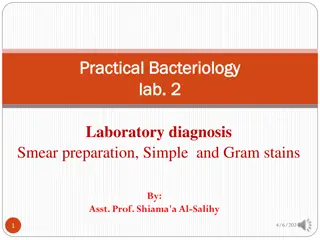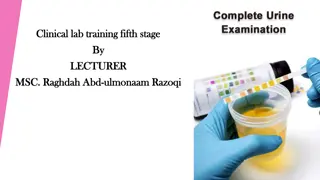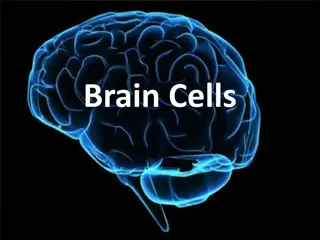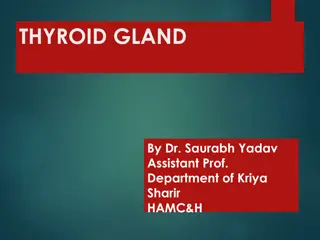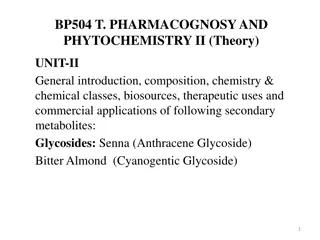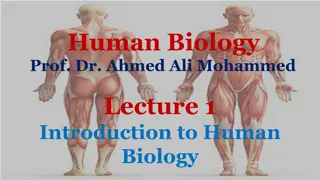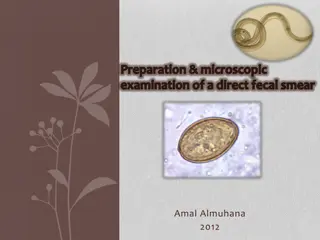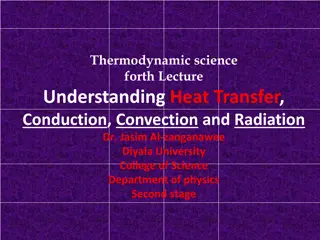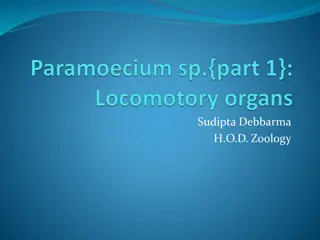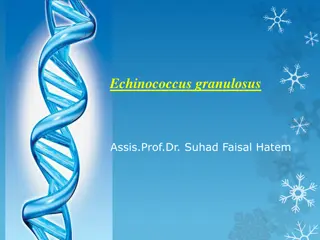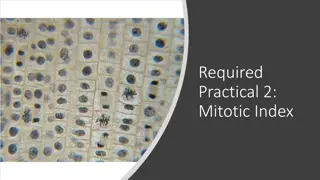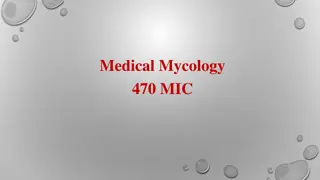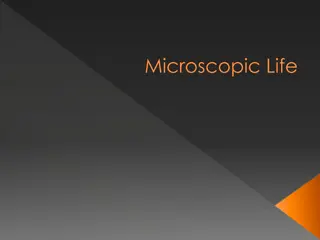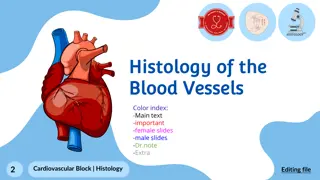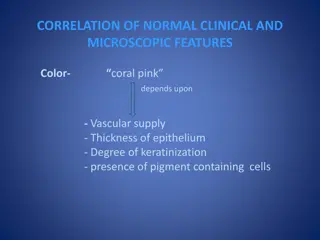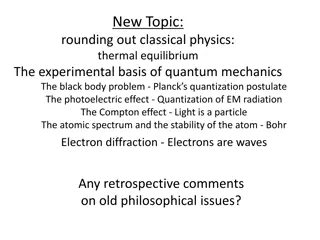Equipment Management - LABS FOR LIFE PROJECT - INDIA
Histopathology and cytology equipment, focusing on the tissue processor, important parts, maintenance, and steps in tissue processing. Understand the significance of these tools in the microscopic examination of tissues for disease manifestations.
5 views • 30 slides
Practical Bacteriology Laboratory Diagnosis and Sample Collection
This practical guide focuses on laboratory diagnosis steps in bacteriology, covering specimen collection, microscopic examination, culture tests, biochemical tests, serological tests, and molecular tests. Learn about various sample collection methods for urine, stool, swabs, sputum, pus, CSF, and mo
3 views • 23 slides
Exploring Surface Tension and Wettability in Nature
Discover the fascinating world of surface tension and wettability through engaging experiments and observations, from water cohesion on a penny to the microscopic structures on lotus leaves. Delve into the role of cohesion and adhesion, surface wettability factors, and everyday applications of these
2 views • 17 slides
Heisenberg's Uncertainty Principle in Elementary Quantum Mechanics
Heisenberg's Uncertainty Principle, proposed by German scientist Werner Heisenberg in 1927, states the impossibility of simultaneously and accurately determining the position and momentum of microscopic particles like electrons. This principle challenges classical concepts of definite position and m
0 views • 49 slides
Understanding Urinalysis: Importance and Interpretation
Urinalysis is a crucial diagnostic test used to detect various disorders like infections, kidney diseases, and diabetes by examining the physical, chemical, and microscopic properties of urine. It involves assessing color, specific gravity, and chemical content, such as pH and protein levels. The in
0 views • 22 slides
Brain Cells
Delve into the fascinating world of brain cells and neurons to understand their structure, function, and communication process. Explore the microscopic level composition of the brain, the significance of neuron shapes, and the intricate workings of synapses in transmitting signals between neurons. U
1 views • 14 slides
3D Cell Culture Market to be Worth $4.02 Billion by 2030
3D cell culture is frequently employed in research that requires in vivo model systems to test the impact of a foreign substance on physiological organs or tissues since they can closely mimic the structure and microscopic structure of organs.
0 views • 9 slides
Yeast Breads Preparation Guide
Explore the world of yeast breads with essential information on yeast, ingredients, terms to know, mixing methods, and baking tips for successful bread making. Learn about the role of yeast as a microscopic plant and the key ingredients needed to create delicious bread. Discover important techniques
0 views • 12 slides
Exploring Unicellular Organisms: Amoeba and Euglena Structures and Characteristics
Journey into the microscopic world of unicellular organisms with a focus on Amoeba and Euglena. Discover the unique structures and behaviors of these tiny creatures, from Amoeba's adaptable pseudopod movements to Euglena's photosynthesis capabilities. Uncover how these organisms survive, feed, and r
0 views • 15 slides
The Role of Soil Microbes in Nutrient Recycling
Soil microbes such as bacteria, protozoa, and nematodes play a crucial role in nutrient recycling by breaking down organic matter, releasing nutrients for plant growth, and aiding in the decomposition process. These microscopic organisms help maintain soil health and ecosystem balance, highlighting
0 views • 16 slides
Histological Structure of Liver and Spleen: Key Features and Functions
In this informative content, the histological structures of the liver and spleen are explored in detail. Key components such as hepatocytes, sinusoids, bile canaliculi, and the spaces of Disse in the liver, and the white pulp and red pulp in the spleen are highlighted. The classic liver lobule, cent
2 views • 10 slides
Understanding the Thyroid Gland: Functions and Hormone Synthesis
The thyroid gland is a vital endocrine gland located below the larynx, responsible for producing thyroid hormones essential for regulating metabolism. This gland consists of follicles lined with follicular cells, producing thyroglobulin and thyroid hormones T3 and T4. Iodine plays a crucial role in
0 views • 40 slides
Comparison of Alexandrian Senna and Indian Senna: Pharmacognosy and Phytochemistry Insights
Explore the pharmacognosy and phytochemistry of Alexandrian Senna and Indian Senna, detailing their collection, preparation, macroscopic and microscopic characteristics, chemical constituents, and potential adulterants. Learn about the therapeutic applications and commercial significance of these gl
0 views • 30 slides
Introduction to Human Biology: Overview of Branches and Studies
Human Biology encompasses various fields such as Anatomy, Physiology, Genetics, and more. It involves the study of life from microscopic tissues to complex organisms, emphasizing the structure, function, and interactions within biological systems.
0 views • 22 slides
Basic Concepts of Microscopy for Materials Study
Microscopy plays a crucial role in examining the structural elements and defects influencing material properties. This involves studying microscopic features like grain size and shape using optical, electron, and scanning probe microscopes. Microstructural examinations help understand property-struc
1 views • 12 slides
Understanding the Histological Structure of Muscle Cells
This presentation delves into the histological structure of three types of muscle cells - skeletal, cardiac, and smooth muscles. Learn about their differences, such as striation, voluntary vs. involuntary control, and cellular organization. Discover the components of muscular tissue, the coverings o
0 views • 13 slides
Preparation of Squamous Epithelium Cells from Human Mucosa Mouth
Squamous cells from the mucosa of the human mouth play vital roles in protecting and maintaining oral health. This guide outlines the steps to prepare slides of these cells for microscopic examination using simple materials and methods. Caution is advised when handling methylene blue due to its toxi
0 views • 7 slides
Atomic Charges and Masses Calculations
Calculate the charges and masses of various ions and atoms, including hydrogen, sodium, chloride, calcium, nitrogen, and more. Explore scenarios involving electron count, electrical forces, gravitational forces, and their effects. The content encompasses physics concepts related to atomic structure,
0 views • 15 slides
Microbiology Lab: The Hanging Drop Preparation
Learn how to prepare living microorganisms for microscopic study using the hanging drop technique. This method involves suspending microorganisms in a fluid and creating a hanging drop on a hollow ground slide, allowing for observation of morphology and motility. Follow step-by-step procedures to ma
0 views • 17 slides
Understanding Anatomy: Branches and Components of the Human Body
Anatomy, the study of body tissue structures, encompasses various branches including Gross Anatomy, Systematic Anatomy, and Microscopic Anatomy. Osteology focuses on the skeleton's components and functions as a crucial support system for the body, aiding in movement and protection of organs.
5 views • 12 slides
Direct Fecal Smear Preparation and Microscopic Examination Procedure
Direct fecal smears are useful for quick screenings to detect intestinal parasites. This article outlines the preparation and microscopic examination procedure for direct fecal smears. It covers advantages, disadvantages, fecal collection methods, and steps for preparing and examining fecal smears u
0 views • 16 slides
Electric Current and Resistance: Lecture Highlights and Mid-term Exam Reminder
Today's lecture covers topics on electric current, resistance, Ohm's Law, resistors, resistivity, electric power, and microscopic views of current flow. Important announcements include reading assignments, mid-term exam details, online class rules, and exam guidelines. A refresher on electric curren
0 views • 19 slides
Understanding Heat Transfer in Thermodynamics Lecture
This thermodynamics lecture covers essential topics such as heat transfer, conduction, convection, and radiation. Dr. Jasim Al-zanganawee from Diyala University explains Thermodynamic Processes, Internal Energy, Properties of a System, and Thermodynamic Cycles. Students will learn about extensive an
0 views • 11 slides
Enhancing Learner Understanding through Computer-Based Simulations in Teaching Electrolysis
Computer-based simulations (CBS) have the potential to improve learner comprehension of complex science concepts like electrolysis. Challenges in teaching and learning electrolysis include identifying anode/cathode, analyzing reactions, and writing chemical equations. Factors contributing to these c
0 views • 34 slides
Thyroid and Parathyroid Glands Histological Structure Overview
This detailed histological study covers the structure and function of the thyroid and parathyroid glands. It includes information on the stroma, parenchyma, follicular cells, parafollicular cells, and the microscopic structure of the parathyroid gland. The article also delves into the functions of v
0 views • 8 slides
Understanding Histological Techniques for Tissue Preparation
Histological technique involves preparing tissue for microscopic examination, aiming to preserve the microscopic anatomy and structure of tissues. The process includes fixation, dehydration, cleaning, embedding, cutting, and staining. Key steps like fixation using fixative materials help prevent aut
0 views • 18 slides
Understanding Paramoecium Caudatum: A Microscopic Organism with Unique Characteristics
Paramoecium caudatum is a typical ciliate protozoan characterized by the presence of cilia as a locomotor organelle, nuclear dimorphism, and a unique form of sexual reproduction called conjugation. Commonly found in freshwater habitats, this microscopic organism has a distinct structure with a pelli
3 views • 10 slides
Microscopic Structure and Histology of Kidney and Urinary Tract
Explore the intricate details of kidney anatomy, nephron structure, glomerular filtration barrier, and the histology of renal cortex and medulla, renal corpuscle, proximal and distal tubules, juxtaglomerular apparatus, as well as the urinary bladder and urethra in both male and female. Delve into th
0 views • 17 slides
Understanding Echinococcus Granulosus and Hydatid Disease
Echinococcus Granulosus, also known as the hydatid worm or dog tapeworm, causes cystic echinococcosis. The tapeworm has distinct characteristics and a complex life cycle involving canids as definitive hosts and humans as accidental hosts. Hydatid disease in humans can be dangerous, with symptoms var
0 views • 8 slides
Understanding Optical Storage Technology
Optical storage technology originally designed for audio offers a capacity of 650MB, providing over 70 minutes of audio playback. Data is recorded digitally on a polycarbonate disk's surface as microscopic pits. The disk is organized in a spiral track with sectors of the same length arranged in bloc
5 views • 16 slides
Understanding Mitotic Index in Practical Biology
Explore the practical technique of determining the mitotic index, a key aspect of cell division, through a step-by-step process involving garlic root tip preparation and microscopic observation. Discover real-world applications and enhance your skills in risk assessment and tissue analysis. Uncover
0 views • 15 slides
Fungal Microbiology Laboratory Procedures
This content provides detailed guidelines on fungal culture purification, subculturing process, preparation of microscopic slides for fungal micromorphology assessment, and isolation of human samples for diagnosing fungal infections. The procedures include steps for identifying characteristics of in
1 views • 9 slides
Crowd Flow Model Development for Consequence Assessments
Development of a crowd flow model coupled with concentration fields for consequence assessments. The proposed model aims to predict casualty estimates by integrating pedestrian flow and hazardous atmospheric releases. Various existing models like EpiSimS, HPAC, ALOHA, and CATS are considered in the
0 views • 25 slides
Introduction to Histology and Microscopy in Anatomy
Histology is the study of tissue structure and function in animals and plants, focusing on the microscopic structure of cells, tissues, and organs. It helps in understanding the relationship between structure and function, intertwining disciplines like cell biology, pathology, physiology, and bioche
0 views • 5 slides
Exploring Microscopic Life Through a Microscope
Journey into the microscopic world by examining Elodea leaves and Paramecium under a microscope. Discover the intricate details of these tiny organisms, observe their movement, and learn about their structures. Engage in hands-on activities to explore the fascinating realm of microscopic life.
0 views • 16 slides
Microscopic Structure of Blood Vessels and Their Layers
The lecture covers the microscopic structure of the wall of blood vessels including large veins, elastic arteries, muscular arteries, and blood capillaries. The three concentric layers of blood vessel walls are discussed, which include the tunica intima, tunica media, and tunica adventitia. Detailed
0 views • 11 slides
Fascinating Microscopic World: Leech Feeding and Grasshopper Exoskeleton
Explore the intricate details of a leech feeding on beef kidney and a Grasshopper's cleaned-out exoskeleton by The E. obscura in these captivating microscopic images.
0 views • 7 slides
Understanding Interfacial Defects and Microscopy in Materials Science
Interfacial defects are boundaries separating regions with different crystal structures, like grain boundaries in polycrystalline materials. Microscopic examination distinguishes between macroscopic and microscopic dimensions, analyzed through optical and electron microscopy methods. Electron micros
0 views • 9 slides
Understanding Correlation of Normal Clinical and Microscopic Features in Gingival Health
The correlation of normal clinical and microscopic features in gingival health involves factors such as color, size, contour, shape, consistency, surface texture, stippling, position, and continuous tooth eruption. These elements depend on various aspects like vascular supply, thickness of epitheliu
0 views • 13 slides
Exploring the Interplay Between Classical Physics and Thermodynamics in Quantum Mechanics
Delve into the foundational principles of classical physics and thermodynamics that paved the way for the development of quantum mechanics. From the black body problem to the quantization postulate by Planck, discover how key phenomena like the photoelectric effect and Compton effect shaped the unde
0 views • 20 slides

